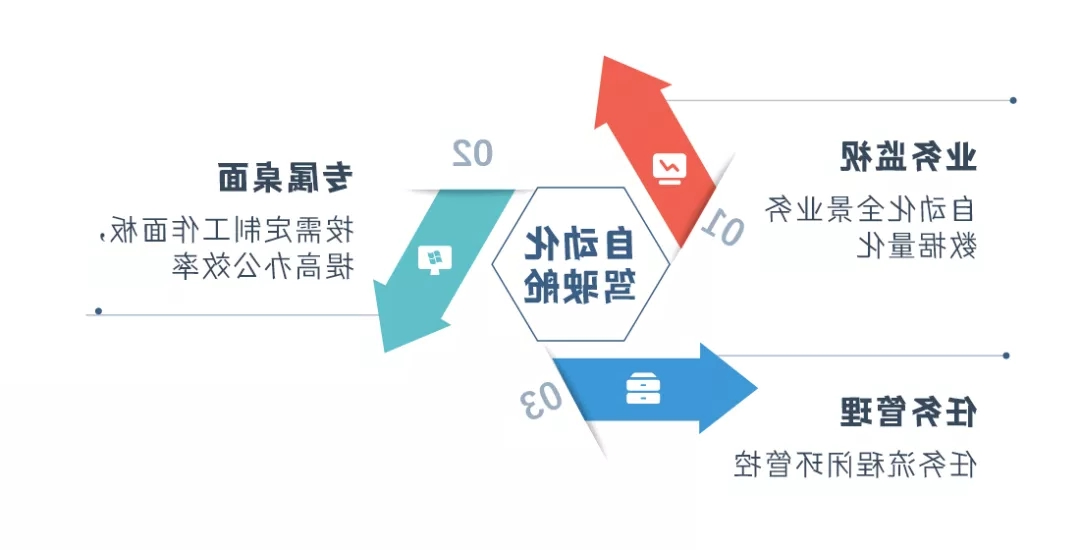
1. Business monitoring
Business monitoring focuses on real-time monitoring of business status data, helping automation professionals find and localize problems, and achieving the purpose of automatic operation and maintenance. It is mainly divided into four parts: Main station monitoring, daily operation monitoring, server monitoring and shift task monitoring.
① Main station monitoring
It involves main dispatching, standby dispatching, main network and standby network, including all the key procedures of power business, core operation procedures, business data synchronization status, etc. Through real-time collection service, the operation information of the main station server workstation is collected, and the monitoring result data is encapsulated by Restful specification. The user can monitor the health status of the main station in real time, and capture the abnormal monitoring events in real time through the user-defined alarm generation rules.② Daily operation monitoring
The daily operation types of automation personnel are recorded. By classifying the daily operations of automation personnel, there are four types: listing, manual number setting, alarm prohibition and interval operation. The monitoring results are displayed on the interface in tabular format. Users can not only visually browse the operation records through the interface, but also automatically form a closed-loop process after the operation items are processed by users.③ Server monitoring
It involves dispatching, standby dispatching, main network and standby network, and the monitoring dimensions are: network, memory, hard disk, etc. Through real-time collection service, the running status information of server workstation is collected, and the monitoring result data is encapsulated by Restful specification. Users can monitor the health status of the server in real time, and capture abnormal monitoring events in real time through user-defined alarm generation rules.④ Team task monitoring
Team tasks are divided into daily tasks and special tasks. Daily tasks are short-term tasks, and special tasks are long-term tasks. Show the tasks that will be overdue in the near future through tables, and remind the automation shift members to follow up in time.2. Customize personal exclusive desktop
Due to the different positions, special duties and attention information of the automation shift members, different cards are customized according to users' needs and stored in the card pool, which is freely chosen by the members. Members from the shift are free to choose the required cards, adjust the placement position, and let the expected data appear in sight; Cards can monitor the key data of the specified system. Behind each card is an independent system or module, which can customize the card jump event, jump to the target system with one button, and open any door exclusively for the shift member.

3. Task management
The task management module takes "management" as the core, and divides several sub-modules according to the above monitoring contents. All the sub-modules are closed-loop controlled according to the work contents of the automation shift members. (1) Succession management Every week, the automation shift will select a shift member as the attendant, who will manage all the work during the shift period, including: Dispatcher, tracking the daily operation of the system, tracking the debugging work, etc. During the period of duty, only the personnel on duty have the authority to change the details of duty. On the last day of duty, the personnel on duty next week will be set up by designating the succession person. The daily work of automation shift members is already very tedious. For repetitive work such as system inspection, it can be as simple as possible. With automatic fault exception capture and automatic closed loop, automatic shift members can easily cope with daily work by simply browsing.



4. Closed loop control
Based on the data of the automated business system, the automatic closed-loop management of all defects in the existing system is realized. By fully automatic analysis of the whole process of defect classification, collection, display and alarm, automation professionals are freed from defect analysis and have energy to pay more attention to other automated business management. Conclusion Automated cockpit plays the role of data production factors, leads and optimizes business flow with data flow, enhances the flexibility, openness, interactivity, economy and sharing of power grid, and makes the power grid more intelligent, safe, reliable, green and efficient. DFE will continue to dig deep into customers' needs, work closely with customers, explore and advance continuously under the framework of new power system through innovation, and empower the digital transformation of power grid.